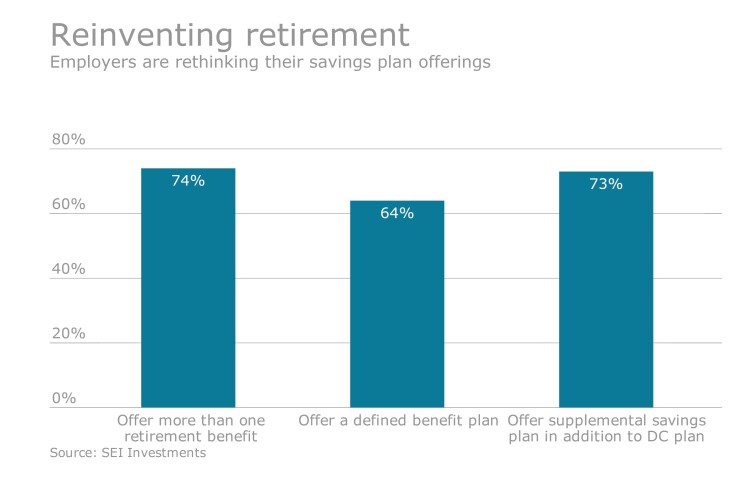Traditional financial theory relies on assumptions about investors and markets, particularly that they are rational and given a set of inputs will make good choices.
However, studies have shown that participants and markets do not behave within the confines of traditional theory and are prone to irrationality, which can be displayed in the form of deep pessimism, ineffective decisions or irrational exuberance.
This presents retirement plan advisers with an interesting dilemma — how to build an investment menu that adheres to regulatory safe harbors like the Employee Retirement Income Security Act section 404(c), is sound and protects participants from irrational decisions when directing their investments.

Behavioral finance, which seeks to challenge traditional theory based on observed investor and market behavior, can provide some insights into best practices for advisers.
Option overload
Consider the following: You sit down at a local restaurant to enjoy a meal, open the menu and see page after page of options ranging from the common to the obscure. With so many options, how can you decide which will be the best one?
There’s no marker to distinguish between house specialties or the more popular items. Perhaps the server can point you in the right direction, but without knowing your specific tastes and desires, their recommendations may not be spot on. Worse yet, as a diner presented with such a large menu, one should ask the question: “How long has some of this food been back there?” Certainly, not every ingredient is used frequently enough to be completely fresh.
There are lessons advisers can take from the this diner’s experience:
- Keep the menu simple. A plan can adhere to ERISA without being inundating with options. A plan participant may struggle in choosing the allocation that meets their needs with too many choices. Consider choosing 8-12 core options that range from different asset classes and capitalization spectrums, passive and active, and globally. A target-date option may be prudent as well for those participants that do not want to manage their own account.
- Know your target market. Consider recommending investments that align with the average participant of the plan. This entails having a deep understanding of the group’s investment experience, overall risk tolerance, ages and savings rates.
- Investment prudence. An adviser must conduct the necessary due diligence to fully understand an offering’s value to an organization. This includes understanding the investment mandate and its strengths and weaknesses, the relevant risk statistics, performance and fees. Monitor the offerings to keep the menu fresh.
Any investment menu should align with participants’ goals and abilities, be concise to reduce choice overload but still allow the creation of a diversified portfolio. It should also include investment options that have been fully vetted with a prudent, disciplined process. Keep it simple and participants will thank you.





